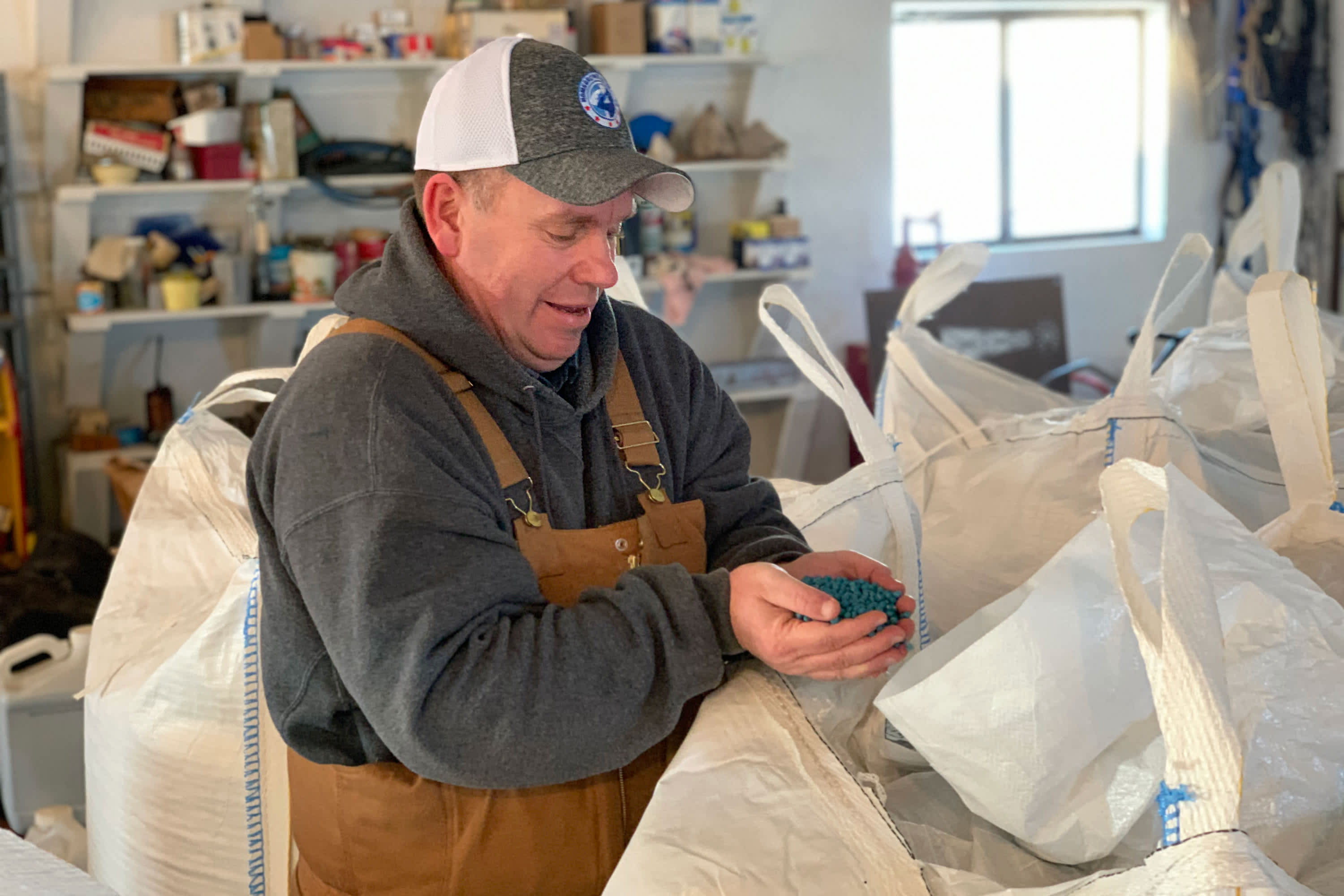This post was originally published on this site

It’s breakfast time in Flaxville, Montana. The thermometer says it’s four degrees, but the Weather Channel says it feels like minus 3.
Paul Kanning is trudging through the snow to grain bins on his nearly 3,000 acre farm. One is stuffed with dry yellow peas.
“I don’t know where they’re going yet this year,” he said.
American pea farmers don’t have peace of mind this Christmas.
“We’re at 20-year lows for our prices right now,” said Tim McGreevy, CEO of the USA Dry Pea & Lentil Council. “They’re trading under 10 cents a pound to the grower, which is really below the cost of production.”
Most U.S. grown peas are exported, and the two largest customers have slapped on huge tariffs. India placed a 50 percent tariff on American peas as it tries to protect its own farmers, and China has a 35 percent tariff as part of the current trade war.
Paul Kanning, Owner and Operator, TomTilda Farm
Stephen Desaulniers | CNBC
“We’re down about 300,000 metric tons in demand from our two largest suppliers,” McGreevy said. “That’s a little hard to make up.”
Canadian pea exports are not subject to the same tariffs. As a result, Canada is selling more peas. It has less than 10 percent of “stocks on hand,” the amount of annual crop carrying over to the next year. In the U.S., the number is closer to 50 percent.
‘Lot of beauty in peas’
This is happening at a time when pea production is up 40 percent from a year ago. Pea acreage is up 400 percent in the last quarter century. More farmers are using peas as part of their crop rotation.
“There’s a lot of beauty in peas, specifically because they’re nitrogen fixating,” said Tyler Lorenzen, a former NFL player who returned to agriculture as CEO of Puris Foods, a pea protein producer based in Minneapolis. Lorenzen says peas are good for the soil.
“They take nitrogen from the air and convert it to usable fertilizer for itself, but they overproduce it, so they make fertilizer for the next plant,” he said.
Cargill has invested $100 million in Puris to beef up pea production and encourage more farmers to grow peas, despite the current low prices. However, the high protein product Puris creates for companies like Beyond Meat comes from a propriety seed which can be relatively expensive.
Paul Kanning was approached by Puris to buy some seeds.
“At first I said no,” he said. It wasn’t just a cost issue, there was also risk. He’d never grown this particular pea seed before, and Montana is a new region for the company. But Kanning said he and Puris came to terms, and he purchased about $15,000 of the seed for 2020.
Beyond Beyond Meat
He’s pleased that Beyond Meat is not the only customer demanding more peas.
“It’s going into milk and snacks and pet food, and there’s so many great uses for this pea protein,” Kanning said. However, he’s concerned the hype around sustainable meat substitutes may not be sustainable itself.
“I wonder sometimes if it’s going to be a short term demand,” he said. Still, “If this is something that’s going to be sustained, I want to take the opportunity to kind of get it on the ground floor.”
Paul Kanning, Owner and Operator, TomTilda Farm
Stephen Desaulniers | CNBC
Kanning’s doubling down on peas has split his neighbors. Montana is better known for beef than beef substitutes.
“There’s this kind of friction between beef growers and pea growers on things like Beyond Meat,” he said, standing in a desolate landscape covered in snow.
“I guess my approach to that is it’s not really for the farmer or rancher to decide what the consumer wants. They’re gonna go whatever direction they’re gonna go,” said Kanning.
More consumers appear to be going in the plant-based direction. There were 327 new pea protein products launched in 2019, up from eleven a decade ago. Tyson has come out with a new blended product which is half beef, half pea protein, using the tagline, “Leafy Meets Beefy.”
Globally, the numbers are even bigger, with over 1,300 new products launched this year.
Tim McGreevy said new domestic demand is not enough to make up for export losses. The trade war weighs on farmers’ minds.
“There’s been very strong support for the President in rural areas of the U.S. and our growing region,” McGreevy said. “They understand that there’s been some unfair play by some of our trading partners, and they’re just hoping that the trade wars end soon, and that they’re successful.”






